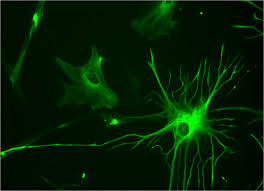Highlights
- Astroglial Ca2+ signals change dynamically with sleep, wake, and sleep loss
- Astroglial Ca2+ encodes changes in sleep need
- Synchrony of astroglial Ca2+ signals changes with vigilance state and sleep need
- Reduced astroglial Ca2+ via knockout of STIM1 reduces sleep drive after sleep loss
Summary
Mammalian sleep expression and regulation have historically been thought to reflect the activity of neurons. Changes in other brain cells (glia) across the sleep-wake cycle and their role in sleep regulation are comparatively unexplored. We show that sleep and wakefulness are accompanied by state-dependent changes in astroglial activity. Using a miniature microscope in freely behaving mice and a two-photon microscope in head-fixed, unanesthetized mice, we show that astroglial calcium signals are highest in wake and lowest in sleep and are most pronounced in astroglial processes. We also find that astroglial calcium signals during non-rapid eye movement sleep change in proportion to sleep need. In contrast to neurons, astrocytes become less synchronized during non-rapid eye movement sleep after sleep deprivation at the network and single-cell level. Finally, we show that conditionally reducing intracellular calcium in astrocytes impairs the homeostatic response to sleep deprivation. Thus, astroglial calcium activity changes dynamically across vigilance states, is proportional to sleep need, and is a component of the sleep homeostat…







